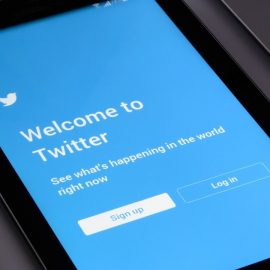

This article is an excerpt from the Shortform book guide to "Hit Refresh" by Satya Nadella. Shortform has the world's best summaries and analyses of books you should be reading.
Like this article? Sign up for a free trial here.
What role should empathy play in corporate leadership? Should you show empathy to competitors?
Microsoft CEO Satya Nadella asserts that empathy is rooted in direct engagement and that it should be the cornerstone of all of a CEO’s relationships. Of course, this involves showing empathy to employees, but it also involves showing empathy to customers, competitors, and partners.
Let’s explore how this empathy looks in the business world.
Empathy for Customers
Nadella employs direct engagement with customers by going out into the world to see how Microsoft’s products are used in action. For him, showing empathy to customers requires seeking out opportunities to directly engage with how people use Microsoft. This is how he learns what they need.
He invited customers—schools, nonprofits, small businesses, and so on—to the senior leadership team’s annual retreat so that Microsoft’s senior researchers, engineers, sales, and other executives could understand what the customers’ problems were and work together to solve them. He also writes about witnessing the positive effects of Microsoft’s technology in hospitals and clinics—during Zain’s stays at the hospital, Nadella noted how many of the devices in the ICU ran on Windows and were connected to the cloud. This reminded him of how Microsoft’s work could make a difference in people’s lives.
(Shortform note: Nadella’s attitude toward customers is in line with the modern principles of sales, which Daniel Pink details in To Sell Is Human. Pink writes that contemporary selling strategies require building a connection—getting in sync with and adapting to people, communities, and contexts to serve their needs. One way to do this is to use your imagination to consider the customer’s perspective. This enables you to see if you missed any of their needs by focusing on your own perspective or experience.)
Empathy for Competitors
Nadella also says it’s important to engage directly with competitors in order to learn from them or to resolve disputes. He writes about meeting with executives from large tech rivals such as Apple and Facebook to better understand what they were doing well that Microsoft wasn’t doing and willingly learning from them. We’ll discuss this in more detail later in the guide.
(Shortform note: While Microsoft was engaged in storied rivalries, particularly against Apple, Nadella brought in a different mindset, one that’s similar to what Simon Sinek describes in The Infinite Game. Sinek writes that viewing competitors as worthy rivals rather than just rivals enables you to see what they’re better at and how you can improve. This encourages you to shift your focus from defeating others to maintaining a healthy position in your industry.)
Empathy for Partners
Nadella writes about how empathy plays a big part in his approach to business disputes with partners. He seeks common ground instead of trying to win or dominate others. He argues that empathy allows business leaders to understand the legitimate concerns or objections others may have and to find positive solutions that work for both parties.
He describes how this empathy paid off in a dispute with Yahoo, which used Microsoft’s Bing as its search partner. Yahoo wanted to breach its contract, and the situation could have easily escalated. Instead of making threats and demands, the Microsoft team practiced empathy and listened to the Yahoo team’s concerns. They worked together to find a solution that satisfied both parties—without costly litigation.
| 5 Steps for Resolving Conflicts in Business Partnerships While business partnerships can bring considerable benefits to both parties, nonetheless, it’s not uncommon for partners to face occasional rough patches. These five steps can help you resolve conflicts in business partnerships and get back on track. They dovetail with Nadella’s approach to practicing empathy: Step #1: Hear both sides. Set aside your own opinions temporarily, and listen to what your partner has to say with an open mind. Seek to understand your partner’s position even if you don’t agree with how they view the situation. Step #2: Re-establish common goals. Disagreements are often rooted in a misunderstanding or in a misalignment of goals. Going back to the drawing board to re-establish the goals you wish to reach together will help to clarify what needs to happen. Step #3: Focus on the facts. To avoid impulsivity, emotional outbursts, or the blame game, seek to keep the focus on the facts and not on your feelings about them. Objectively assessing the situation can help keep things productive and calm. Step #4: Talk to a mediator. A third party can help resolve disputes by bringing a neutral voice into the discussion to moderate disputes. Hire a business coach or counselor to air your issues and seek guidance. Step #5: Make a plan. Work with your business partner on a clear, step-by-step plan for getting back on track and reaching your shared goals. Make sure that each partner contributes to, and fully understands, the plan before getting back to business. |

———End of Preview———
Like what you just read? Read the rest of the world's best book summary and analysis of Satya Nadella's "Hit Refresh" at Shortform.
Here's what you'll find in our full Hit Refresh summary:
- How Satya Nadella brought Microsoft back from its decline
- Actionable advice to help you reinvigorate your company
- A look at the ethical responsibilities of tech companies






